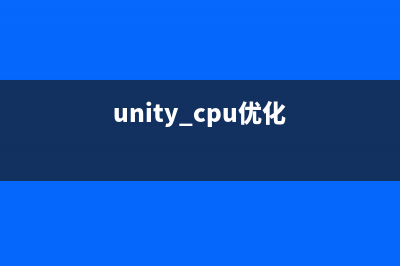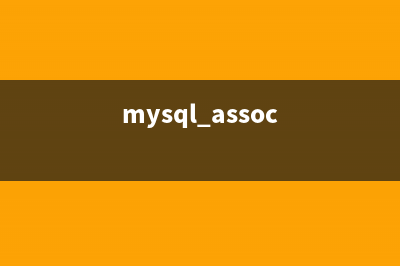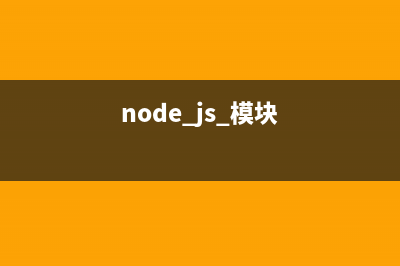位置: 编程技术 - 正文
【转】【UNITY3D 游戏开发之六】UNITY 协程COROUTINE与INVOKE(unity mobile3d)
编辑:rootadmin推荐整理分享【转】【UNITY3D 游戏开发之六】UNITY 协程COROUTINE与INVOKE(unity mobile3d),希望有所帮助,仅作参考,欢迎阅读内容。
文章相关热门搜索词:unity 3d教程,unity-3d,u3d unity3d,unity-3d,unity3ds,unity3d官方教程,unity3ds,unity3ds,内容如对您有帮助,希望把文章链接给更多的朋友!
本站文章均为 李华明Himi 原创,转载务必在明显处注明:(作者新浪微博: @李华明Himi ) 转载自【黑米GameDev街区】 原文链接: ☞ 点击订阅 ☜ 本博客最新动态!及时将最新博文通知您!
这里Himi强调一点:Unity里面的协程并不是线程,协程是在unity主线程中运行的,每一帧中处理一次,而并不与主线程并行。这就意味着在协程之间并不存在着所谓线程间的同步和互斥问题,不会出现死锁。一般来说,访问同一个值也都是很安全的,用协程可以处理绝大多数的小问题,而且不用考虑复杂的线程间同步,还是很方便的。要说协程的不足就是不能运用处理器的多核来提高处理性能,毕竟这个在运行时事实上是在一个线程中执行的。
【以下均为转载内容】
1. Unity3D –MonoBehaviour类Invoke,Coroutine : Unity3D协程介绍 以及 使用 : U3D 游戏开发中的 yield协程与消息传递 :
Invoke:
在Unity中,延时执行一段代码或者一个方法或者几个方法的情况非常普遍。
一般会用到Invoke和InvokeRepeating方法。顾名思义,第一个是执行一次,第二个是重复执行。
看下定义:
void Invoke(string methodName, float time);
第一个参数是方法名(注意是字符串形式),并不是更方便的委托。第二个是延时多少秒。只执行一次。
void InvokeRepeating(string methodName, float time, float repeatRate);
InvokeRepeating第二个参数是延时多少秒后开始,第三个参数是每次执行间隔的秒数。
你有没有发现这两个方法有个弊端,就是必须输入方法名!也就是我说,如果我想延时执行某段代码,必须把代码放在某个方法里,然后使用这Invoke或者InvokeRepeating方法来执行。
这样对于上下文变量、属性的引用就会尤为不便,而且不能传参数!!!尼玛,要他还有何用?
我猜你一定用过这样的方法。没错,“协同”,听起来还挺高大上的名字啊。
用StartCoroutine来执行一个以IEnumerator为返回值的方法,通常用于异步下载啊,等比较耗时又不能让游戏卡死的情况。
还有一个好的类WaitForSeconds,对,它就一个构造函数,用来延时的(延时………………比万艾可好用?比希爱力好用?)。
好了不废话了,以下是我自用的延时方法,放在一个类里以静态方法存在。可以在任何时候任何地方延时指定秒数的代码。
using UnityEngine;
using System.Collections;
using System;
public class DelayToInvoke : MonoBehaviour
{
public static IEnumerator DelayToInvokeDo(Action action, float delaySeconds)
{
yield return new WaitForSeconds(delaySeconds);
action();
}
}
如何使用呢?
比如我点击NGUI的一个Button,则
void OnClick()
{
StartCoroutine(DelayToInvoke.DelayToInvokeDo(() =>
{
Application.LoadLevel(“Option”);
}, 0.1f));
}
C#中Invoke 和 BeginInvoke 的区别 :
Coroutine:
尊重他人的劳动,支持原创,转载请注明出处:http.dsqiu.iteye.com
记得去年6月份刚开始实习的时候,当时要我写网络层的结构,用到了协程,当时有点懵,完全不知道Unity协程的执行机制是怎么样的,只是知道函数的返回值是IEnumerator类型,函数中使用yield return ,就可以通过StartCoroutine调用了。后来也是一直稀里糊涂地用,上网google些基本都是例子,很少能帮助深入理解Unity协程的原理的。
本文只是从Unity的角度去分析理解协程的内部运行原理,而不是从C#底层的语法实现来介绍(后续有需要再进行介绍),一共分为三部分:
线程(Thread)和协程(Coroutine)
Unity中协程的执行原理

IEnumerator & Coroutine
之前写过一篇《Unity协程(Coroutine)管理类——TaskManager工具分享》主要是介绍TaskManager实现对协程的状态控制,没有Unity后台实现的协程的原理进行深究。虽然之前自己对协程还算有点了解了,但是对Unity如何执行协程的还是一片空白,在UnityGems.com上看到两篇讲解Coroutine,如数家珍,当我看到Advanced Coroutine后面的Hijack类时,顿时觉得十分精巧,眼前一亮,遂动了写文分享之。
线程(Thread)和协程(Coroutine)
D.S.Qiu觉得使用协程的作用一共有两点:1)延时(等待)一段时间执行代码;2)等某个操作完成之后再执行后面的代码。总结起来就是一句话:控制代码在特定的时机执行。
很多初学者,都会下意识地觉得协程是异步执行的,都会觉得协程是C# 线程的替代品,是Unity不使用线程的解决方案。
所以首先,请你牢记:协程不是线程,也不是异步执行的。协程和 MonoBehaviour 的 Update函数一样也是在MainThread中执行的。使用协程你不用考虑同步和锁的问题。
Unity中协程的执行原理
UnityGems.com给出了协程的定义:
A coroutine is a function that is executed partially and, presuming suitable conditions are met, will be resumed at some point in the future until its work is done.
即协程是一个分部执行,遇到条件(yield return 语句)会挂起,直到条件满足才会被唤醒继续执行后面的代码。
Unity在每一帧(Frame)都会去处理对象上的协程。Unity主要是在Update后去处理协程(检查协程的条件是否满足),但也有写特例:
从上图的剖析就明白,协程跟Update()其实一样的,都是Unity每帧对会去处理的函数(如果有的话)。如果MonoBehaviour 是处于激活(active)状态的而且yield的条件满足,就会协程方法的后面代码。还可以发现:如果在一个对象的前期调用协程,协程会立即运行到第一个 yield return 语句处,如果是 yield return null ,就会在同一帧再次被唤醒。如果没有考虑这个细节就会出现一些奇怪的问题『1』。
『1』注 图和结论都是从UnityGems.com 上得来的,经过下面的验证发现与实际不符,D.S.Qiu用的是Unity 4.3.4f1 进行测试的。经过测试验证,协程至少是每帧的LateUpdate()后去运行。
下面使用 yield return new WaitForSeconds(1f); 在Start,Update 和 LateUpdate 中分别进行测试:
C#代码 using UnityEngine;using System.Collections;public class TestCoroutine : MonoBehaviour { private bool isStartCall = false; //Makesure Update() and LateUpdate() Log only once private bool isUpdateCall = false; private bool isLateUpdateCall = false; // Use this for initialization void Start () { if (!isStartCall) { Debug.Log(“Start Call Begin”); StartCoroutine(StartCoutine()); Debug.Log(“Start Call End”); isStartCall = true; } } IEnumerator StartCoutine() { Debug.Log(“This is Start Coroutine Call Before”); yield return new WaitForSeconds(1f); Debug.Log(“This is Start Coroutine Call After”); } // Update is called once per frame void Update () { if (!isUpdateCall) { Debug.Log(“Update Call Begin”); StartCoroutine(UpdateCoutine()); Debug.Log(“Update Call End”); isUpdateCall = true; } } IEnumerator UpdateCoutine() { Debug.Log(“This is Update Coroutine Call Before”); yield return new WaitForSeconds(1f); Debug.Log(“This is Update Coroutine Call After”); } void LateUpdate() { if (!isLateUpdateCall) { Debug.Log(“LateUpdate Call Begin”); StartCoroutine(LateCoutine()); Debug.Log(“LateUpdate Call End”); isLateUpdateCall = true; } } IEnumerator LateCoutine() { Debug.Log(“This is Late Coroutine Call Before”); yield return new WaitForSeconds(1f); Debug.Log(“This is Late Coroutine Call After”); }}得到日志输入结果如下:然后将yield return new WaitForSeconds(1f);改为 yield return null; 发现日志输入结果和上面是一样的,没有出现上面说的情况:
C#代码 using UnityEngine;using System.Collections;public class TestCoroutine : MonoBehaviour { private bool isStartCall = false; //Makesure Update() and LateUpdate() Log only once private bool isUpdateCall = false; private bool isLateUpdateCall = false; // Use this for initialization void Start () { if (!isStartCall) { Debug.Log(“Start Call Begin”); StartCoroutine(StartCoutine()); Debug.Log(“Start Call End”); isStartCall = true; } } IEnumerator StartCoutine() { Debug.Log(“This is Start Coroutine Call Before”); yield return null; Debug.Log(“This is Start Coroutine Call After”); } // Update is called once per frame void Update () { if (!isUpdateCall) { Debug.Log(“Update Call Begin”); StartCoroutine(UpdateCoutine()); Debug.Log(“Update Call End”); isUpdateCall = true; } } IEnumerator UpdateCoutine() { Debug.Log(“This is Update Coroutine Call Before”); yield return null; Debug.Log(“This is Update Coroutine Call After”); } void LateUpdate() { if (!isLateUpdateCall) { Debug.Log(“LateUpdate Call Begin”); StartCoroutine(LateCoutine()); Debug.Log(“LateUpdate Call End”); isLateUpdateCall = true; } } IEnumerator LateCoutine() { Debug.Log(“This is Late Coroutine Call Before”); yield return null; Debug.Log(“This is Late Coroutine Call After”); }}『今天意外发现Monobehaviour的函数执行顺序图,发现协程的运行确实是在LateUpdate之后,下面附上:』 增补于:// :前面在介绍TaskManager工具时,说到MonoBehaviour 没有针对特定的协程提供Stop方法,其实不然,可以通过MonoBehaviour enabled = false 或者 gameObject.active = false 就可以停止协程的执行『2』。
经过验证,『2』的结论也是错误的,正确的结论是,MonoBehaviour.enabled = false 协程会照常运行,但 gameObject.SetActive(false) 后协程却全部停止,即使在Inspector把 gameObject 激活还是没有继续执行:
C#代码 using UnityEngine;using System.Collections;public class TestCoroutine : MonoBehaviour { private bool isStartCall = false; //Makesure Update() and LateUpdate() Log only once private bool isUpdateCall = false; private bool isLateUpdateCall = false; // Use this for initialization void Start () { if (!isStartCall) { Debug.Log(“Start Call Begin”); StartCoroutine(StartCoutine()); Debug.Log(“Start Call End”); isStartCall = true; } } IEnumerator StartCoutine() { Debug.Log(“This is Start Coroutine Call Before”); yield return new WaitForSeconds(1f); Debug.Log(“This is Start Coroutine Call After”); } // Update is called once per frame void Update () { if (!isUpdateCall) { Debug.Log(“Update Call Begin”); StartCoroutine(UpdateCoutine()); Debug.Log(“Update Call End”); isUpdateCall = true; this.enabled = false; //this.gameObject.SetActive(false); } } IEnumerator UpdateCoutine() { Debug.Log(“This is Update Coroutine Call Before”); yield return new WaitForSeconds(1f); Debug.Log(“This is Update Coroutine Call After”); yield return new WaitForSeconds(1f); Debug.Log(“This is Update Coroutine Call Second”); } void LateUpdate() { if (!isLateUpdateCall) { Debug.Log(“LateUpdate Call Begin”); StartCoroutine(LateCoutine()); Debug.Log(“LateUpdate Call End”); isLateUpdateCall = true; } } IEnumerator LateCoutine() { Debug.Log(“This is Late Coroutine Call Before”); yield return null; Debug.Log(“This is Late Coroutine Call After”); }}先在Update中调用 this.enabled = false; 得到的结果:然后把 this.enabled = false; 注释掉,换成 this.gameObject.SetActive(false); 得到的结果如下:整理得到:通过设置MonoBehaviour脚本的enabled对协程是没有影响的,但如果 gameObject.SetActive(false) 则已经启动的协程则完全停止了,即使在Inspector把gameObject 激活还是没有继续执行。也就说协程虽然是在MonoBehvaviour启动的(StartCoroutine)但是协程函数的地位完全是跟MonoBehaviour是一个层次的,不受MonoBehaviour的状态影响,但跟MonoBehaviour脚本一样受gameObject 控制,也应该是和MonoBehaviour脚本一样每帧“轮询” yield 的条件是否满足。
yield 后面可以有的表达式:
a) null – the coroutine executes the next time that it is eligible
b) WaitForEndOfFrame – the coroutine executes on the frame, after all of the rendering and GUI is complete
c) WaitForFixedUpdate – causes this coroutine to execute at the next physics step, after all physics is calculated
d) WaitForSeconds – causes the coroutine not to execute for a given game time period
e) WWW – waits for a web request to complete (resumes as if WaitForSeconds or null)
f) Another coroutine – in which case the new coroutine will run to completion before the yielder is resumed
值得注意的是 WaitForSeconds()受Time.timeScale影响,当Time.timeScale = 0f 时,yield return new WaitForSecond(x) 将不会满足。
IEnumerator & Coroutine
协程其实就是一个IEnumerator(迭代器),IEnumerator 接口有两个方法 Current 和 MoveNext() ,前面介绍的TaskManager 就是利用者两个方法对协程进行了管理,只有当MoveNext()返回 true时才可以访问 Current,否则会报错。迭代器方法运行到 yield return 语句时,会返回一个expression表达式并保留当前在代码中的位置。 当下次调用迭代器函数时执行从该位置重新启动。
Unity在每帧做的工作就是:调用 协程(迭代器)MoveNext() 方法,如果返回 true ,就从当前位置继续往下执行。
Hijack
这里在介绍一个协程的交叉调用类 Hijack(参见附件):
C#代码 using System;using System.Collections.Generic;using System.Linq;using UnityEngine;using System.Collections;[RequireComponent(typeof(GUIText))]public class Hijack : MonoBehaviour { //This will hold the counting up coroutine IEnumerator _countUp; //This will hold the counting down coroutine IEnumerator _countDown; //This is the coroutine we are currently //hijacking IEnumerator _current; //A value that will be updated by the coroutine //that is currently running int value = 0; void Start() { //Create our count up coroutine _countUp = CountUp(); //Create our count down coroutine _countDown = CountDown(); //Start our own coroutine for the hijack StartCoroutine(DoHijack()); } void Update() { //Show the current value on the screen guiText.text = value.ToString(); } void OnGUI() { //Switch between the different functions if(GUILayout.Button(“Switch functions”)) { if(_current == _countUp) _current = _countDown; else _current = _countUp; } } IEnumerator DoHijack() { while(true) { //Check if we have a current coroutine and MoveNext on it if we do if(_current != null && _current.MoveNext()) { //Return whatever the coroutine yielded, so we will yield the //same thing yield return _current.Current; } else //Otherwise wait for the next frame yield return null; } } IEnumerator CountUp() { //We have a local increment so the routines //get independently faster depending on how //long they have been active float increment = 0; while(true) { //Exit if the Q button is pressed if(Input.GetKey(KeyCode.Q)) break; increment+=Time.deltaTime; value += Mathf.RoundToInt(increment); yield return null; } } IEnumerator CountDown() { float increment = 0f; while(true) { if(Input.GetKey(KeyCode.Q)) break; increment+=Time.deltaTime; value -= Mathf.RoundToInt(increment); //This coroutine returns a yield instruction yield return new WaitForSeconds(0.1f); } }}上面的代码实现是两个协程交替调用,对有这种需求来说实在太精妙了。
小结:
今天仔细看了下UnityGems.com 有关Coroutine的两篇文章,虽然第一篇(参考①)现在验证的结果有很多错误,但对于理解协程还是不错的,尤其是当我发现Hijack这个脚本时,就迫不及待分享给大家。
本来没觉得会有UnityGems.com上的文章会有错误的,无意测试了发现还是有很大的出入,当然这也不是说原来作者没有经过验证就妄加揣测,D.S.Qiu觉得很有可能是Unity内部的实现机制改变了,这种东西完全可以改动,Unity虽然开发了很多年了,但是其实在实际开发中还是有很多坑,越发觉得Unity的无力,虽说容易上手,但是填坑的功夫也是必不可少的。
看来很多结论还是要通过自己的验证才行,贸然复制粘贴很难出真知,切记!
【Unity】GPU优化 GPU优化主要有三个方面:顶点,像素,带宽;》顶点优化优化几何体使用LOD(Levelofdetail)技术。LOD是对模型建立了一个模型金字塔,根据摄像机距离对
【Unity】CPU优化 drawcall影响的是CPU的效率,而且也是最知名的一个优化点。对DrawCall的优化,主要就是为了尽量解放CPU在调用图形接口上的开销。所以针对drawcall我们主
[置顶] u3d 巧用 CaptureScreenshot捕捉游戏画面 孙广东.4.游戏中测试人员在测试的时候,我们很希望能他们捕捉到当时的问题瞬间,而不是简单的用语言描述。账号Unity提供了这个游戏截屏的功能
标签: unity mobile3d
本文链接地址:https://www.jiuchutong.com/biancheng/381479.html 转载请保留说明!上一篇:Unity-DF 2048界面




